
How to take samples of agricultural soil
javid keshtleyzeri Co.ltd
Types of soil samples
The types of soil samples are: simple, composite, intact, disturbed.
Simple sample: If each sample is analyzed separately, it is called a simple sample.
Composite sample: If we mix a number of simple samples and take a final sample, it is called a composite sample.
Intact sample: If the sample has the natural structure of the soil, it is called an intact sample. This type of sample is mostly used to determine the physical properties of the soil.

An intact soil sample
Damaged sample: If the sample does not have the natural structure of the soil or its natural structure is disturbed, it is called damaged sample. This type of sample is used for most chemical soil tests.
In this method, after taking samples from several points according to the area of the field, we mix the samples of each depth at different points. At the end, a sample is obtained which is a combination of soil from different places at a certain depth. The number of simple samples of a farm is variable and on average 30 samples are prepared from each 15-hectare plot.
How to take soil samples
Before sampling, we clean the surface of the sampling site from pebbles, weeds and any impurities.
The sampling depth depends on the type and age of the plant. The appropriate depth for most crops is 0 to 10 cm, but sometimes for some plants with deep roots (such as alfalfa), samples are taken from a depth of 30 to 60 cm.

How to take samples
Cylindrical or spiral Auger sampling drills are used for sampling. The cylindrical type is suitable for sandy and dry soils and the spiral type is suitable for wet soils. If there is no auger, a shovel or hand shovel is used. They use a sampling cylinder to take intact samples.
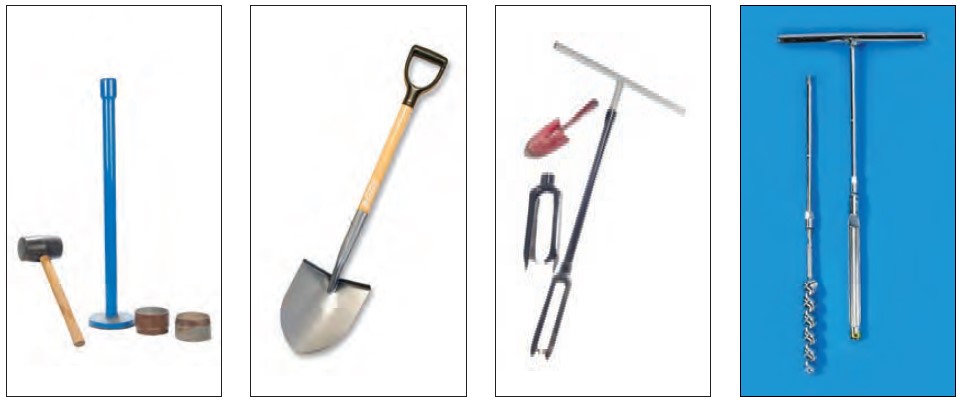
Soil sampling tool
If sampling drills are used, by rotating the handle, the soil is collected in the chamber or at the end of them, and using a spade or spade, first create a pit with a depth of 0 to 30 cm, then a simple sample is taken from the wall of this pit. We harvest with an approximate weight of one kilogram. We put the collected sample inside the bag or bucket.
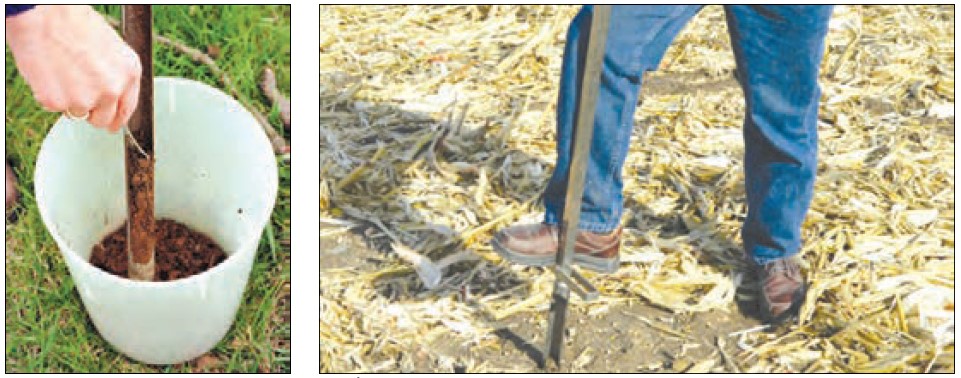
Taking soil samples with an auger
At the end, we spread a substrate and pour the soil of all the one-kilogram bags of each depth on it and mix and spread it. so that the thickness of the expanded soil is about one centimeter. We separate all the thorns, pebbles, and crush the lumps. We make the soil spread on the base into a rectangle and create its main diameters. We take out one of the created triangles and repeat this process until about one kilogram of soil composition is obtained. We pour one kilogram of the final mixed soil into the bag.
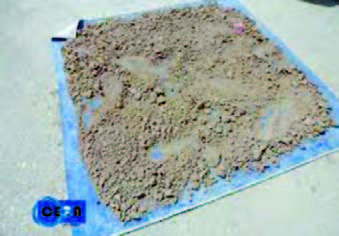
Spreading the soil sample to prepare the composite sample
We provide two labels with the following specifications:

Agricultural soil specification registration label
We install one of the labels inside the bag and the other on the bag. It is recommended to dry the composite sample in the shade and then transfer it, and of course, you should never use heat to dry it. Otherwise, we will close the plastic door and quickly take it to the soil science laboratory.
Important points in soil sampling
Sampling and preparation of the final composite sample must be done in the right way, because any mistake will lead to misleading results.
Therefore, it is recommended that:
1. The tools and containers used for sampling must be completely clean and rust-free, and must not be contaminated with animal manures, chemicals or poisons.
2 from places such as the side of the wall or hedge, the place where animals are kept, animal manure and old and rotten piles of straw and stubble, the route and extension of the fertilizer lines, the place where plant residues and weeds are burned, under trees, roads, places where If there is a hole and water collects in it, waterways, the sides of irrigation streams, the place where materials and construction wastes are dumped, soil sampling should not be done.
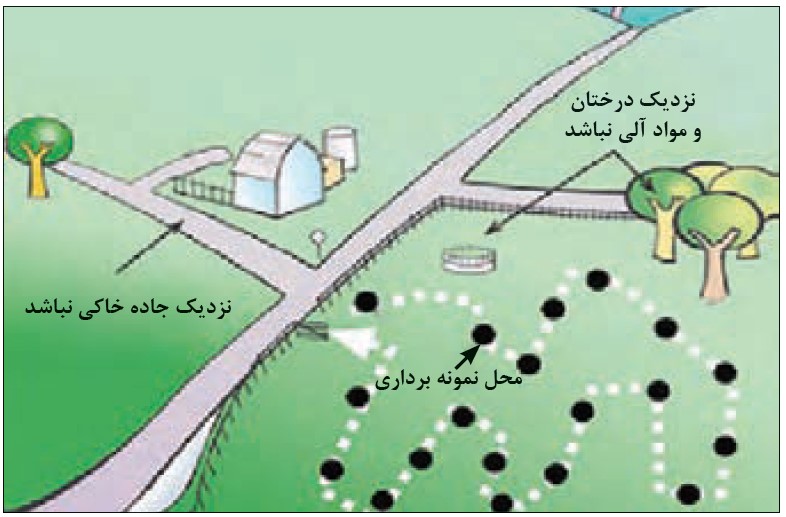
Determining the sampling location
3. No foreign materials such as cigarette ash and the like should be added to the soil sample during sampling or after that.
4. In the drip irrigation method, sampling is done based on the wetting pattern of the ground.
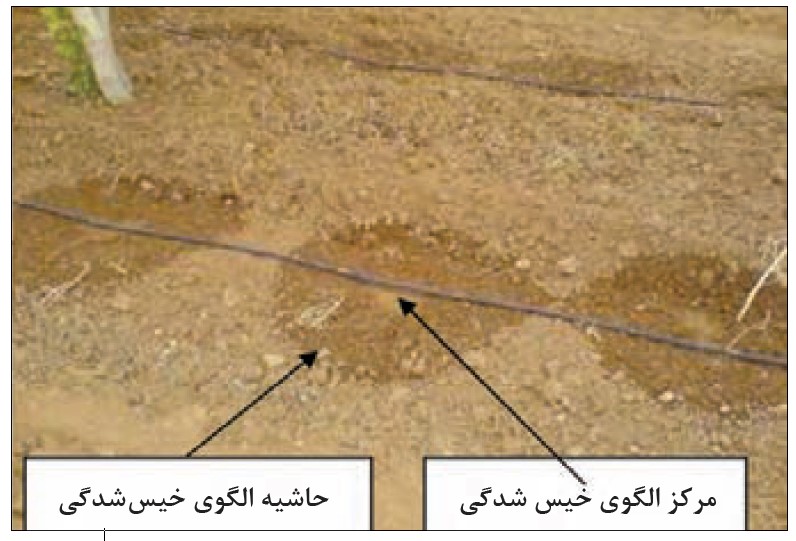
Sampling location in the drip irrigation system
Steps to take agricultural soil samples
1 Divide the desired land into several parts from the map or sketch.
2 Determine the direction of movement in each part for sampling.
3. Hit the first jalan or wooden nail in a corner of the ground 10 meters away from the edge of the ground.
4, according to the plan of the route, beat the other jalans at least every 25 meters.
5. At the sampling site, remove the soil vegetation to a depth of a few centimeters. Be careful not to observe unevenness on the surface of the ground (effects of animals, ants' nests, straw and stubble, etc.). In case of non-canoeing, another place should be chosen near the first place.
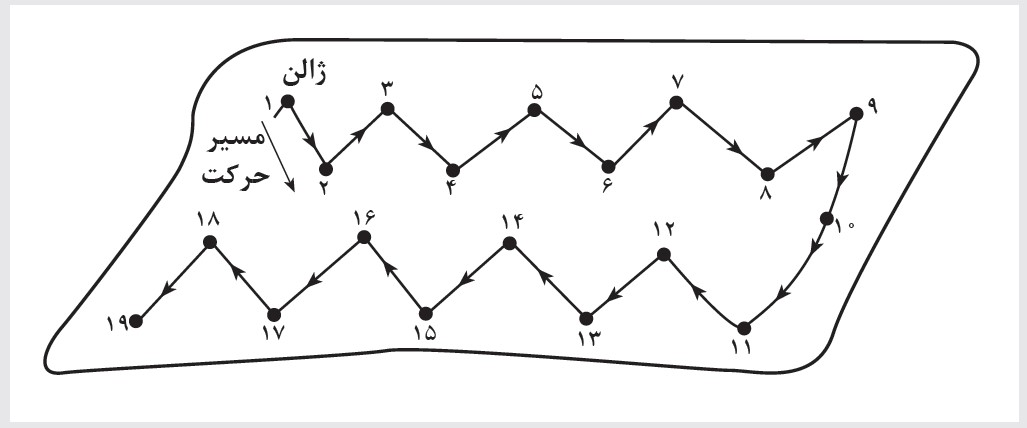
Determining the direction of sampling
6 Make holes 30 cm deep.
7 Scrape the soil of the hole wall with the tip of the shovel. Pour about one kilogram of soil into the sampling bucket.
8 Move to other specified points and do sampling.
9. To prepare a composite sample, pour all the collected samples on the substrate and mix them together.
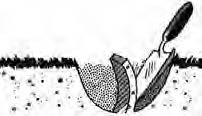
Sample collection method with shovel or spade
10. After removing any impurities and mixing and removing several times, about one kilogram of it will remain on the substrate.
11. Pour the final composite sample into dark-colored bags or cartons. Prepare two labels with the necessary specifications and put one inside the bag and stick the other on the bag.
12. To take samples from a depth of 30 to 60 cm, take the diameter of the hole about 60 cm.
13. In the depth of the hole (after the initial 30 cm) create a hole with a depth of 30 cm as in the previous method.
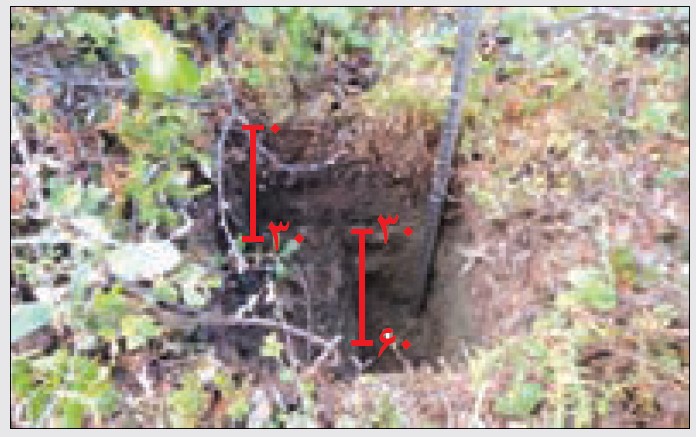
Sampling method from two depths 0 to 30 cm and 30 to 60 cm
14. As in the previous example, scrape the soil from the 30 to 60 cm area of the pit wall with the tip of the shovel, and after mixing, pour about one kilogram of it into the sampling bucket.
15. Move to other specified points and do sampling.
16. To prepare the final sample from this depth, do the same as before.
17 After the end of the soil sampling operation, refill the created holes.
18. Place the delivered tools and equipment in the right place after cleaning. It is better to do sampling with a variety of augers and sampling cylinders to learn more.






